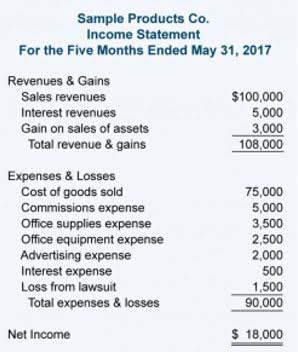
This accounting treatment helps depict a clearer financial picture, one that illustrates the robustness or vulnerabilities of a company’s financial standing. An account with a balance that is the opposite of the normal balance. For example, Accumulated Depreciation is a contra asset account, because its credit balance is contra to the debit balance for an asset account. This is an owner’s normal balance of accounts list equity account and as such you would expect a credit balance.
What is the Normal Balance for Expense Accounts?

Liabilities often have the word “payable” in the account title. Liabilities also include amounts received in advance for a future sale or for a future service to be performed. To learn more about the chart of accounts, see our Chart of Accounts Outline.
Practical Applications of Normal Account Balances

Shareholders’ Equity, according to the Normal Balance of Accounts, represents the residual interest in a company’s assets after liabilities are subtracted, indicating the ownership stake. After these transactions, your Cash account has a balance of $8,000 ($10,000 – $2,000), and your Equipment account has a balance of $2,000. For the past 52 years, Harold Averkamp (CPA, MBA) hasworked as an accounting supervisor, manager, consultant, university instructor, and innovator in teaching accounting online. He is the sole author of all the materials on AccountingCoach.com. For the past 52 years, Harold Averkamp (CPA, MBA) has worked as an accounting supervisor, manager, consultant, university instructor, and innovator in teaching accounting online.

How do asset and liability accounts differ in terms of normal balances?
- An increase in expenses and losses will cause a decrease in cash flow from operations because more cash is going out than coming in.
- For example, if an asset account which is expected to have a debit balance, shows a credit balance, then this is considered to be an abnormal balance.
- For this reason the account balance for items on the left hand side of the equation is normally a debit and the account balance for items on the right side of the equation is normally a credit.
- This tells managers and everyone interested how liquid and stable the finances are.
- Ensuring they’re not overspending and putting themselves in a difficult financial position.
- For example, assume your cash account is and your accounts receivable account is 1-002, now you want to add a petty cash account.
The correlation between these accounts is fundamental for preparing the https://x.com/BooksTimeInc income statement and accurately measuring the profitability of a business. The normal balance for liability account normal balance and equity account balance generally reflects a credit balance. In the case of liabilities, this indicates the financial obligations that a company owes, while equity represents the residual interest owned by shareholders. Here, increases in liabilities and equity are recorded as credits.
Company
- Consider the Normal Balance of Accounts for accounts receivable, which typically maintains a normal debit balance.
- These are both asset accounts.He would debit inventory for $10,000 due to the new inventory and credit cash for $10,000 due to the cost.
- After almost a decade of experience in public accounting, he created MyAccountingCourse.com to help people learn accounting & finance, pass the CPA exam, and start their career.
- A company has the flexibility of tailoring its chart of accounts to best meet its needs.
- This means that the new accounting year starts with no revenue amounts, no expense amounts, and no amount in the drawing account.
- Since cash was paid out, the asset account Cash is credited and another account needs to be debited.
Asset accounts, like Cash and Inventory, have a debit for https://www.bookstime.com/articles/cost-principle their normal balance. On the other hand, liability accounts like Accounts Payable and Notes Payable have a credit normal balance. In business, making sure debits and credits in journal entries match is vital for clear financial reports. This affects how a company makes money and manages its spending, which changes its financial health. University instructors and accounting supervisors put a lot of effort into teaching this. They use tools like accounting online resources to help tell the financial story accurately.
Liabilities

At the end of the accounting year the balances will be transferred to the owner’s capital account or to a corporation’s retained earnings account. The exceptions to this rule are the accounts Sales Returns, Sales Allowances, and Sales Discounts—these accounts have debit balances because they are reductions to sales. Accounts with balances that are the opposite of the normal balance are called contra accounts; hence contra revenue accounts will have debit balances. Each of the accounts in a trial balance extracted from the bookkeeping ledgers will either show a debit or a credit balance. The normal balance of any account is the balance (debit or credit) which you would expect the account have, and is governed by the accounting equation.